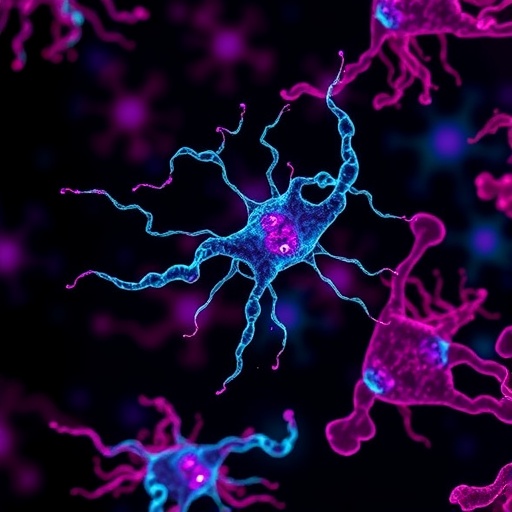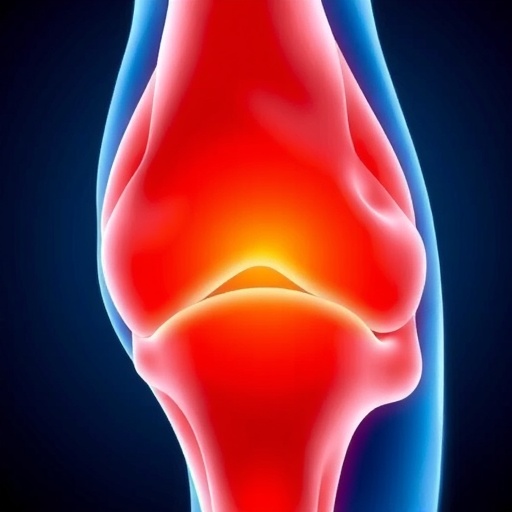
In a groundbreaking study emerging from the Penn State College of Medicine, researchers have unveiled a surprising new role for B cells, long considered the antibody factories of the immune system. Their research reveals that a specialized subset of B cells, residing in the germinal centers of lymph nodes, not only produce antibodies but also secrete the critical signaling molecule interleukin-1 beta (IL-1β). This cytokine, previously thought to be the domain of innate immune cells, orchestrates key steps in the formation of durable adaptive immunity following influenza infection, reshaping our understanding of immune cell interplay.
Traditionally, immune defense against infections is conceptualized as a division of labor between innate and adaptive arms. Innate immunity acts rapidly, deploying frontline cells that recognize and contain pathogens broadly yet non-specifically. Adaptive immunity, by contrast, takes days to develop but confers specificity and memory, principally through the activation and differentiation of B and T lymphocytes. Among adaptive responses, germinal centers within lymph nodes are critical microenvironments where B cells rapidly proliferate, undergo somatic hypermutation, and mature into high-affinity antibody producers and memory B cells.
The new study challenges the orthodox view that IL-1β generation is restricted to innate immune cells such as macrophages and dendritic cells. Led by assistant professor S. Rameeza Allie, the Penn State team demonstrated that germinal center B (GC B) cells produce IL-1β locally, supplying this pivotal cytokine to T follicular helper (TFH) cells. TFH cells are indispensable for germinal center persistence and function, underscoring the finely tuned crosstalk that sustains long-lasting and high-quality humoral immunity.
Mechanistically, the researchers discovered that GC B cells leverage the canonical NLRP3 inflammasome pathway to produce IL-1β. The NLRP3 inflammasome is a multi-protein complex that, upon activation, cleaves pro-IL-1β into its active form, enabling its secretion. This inflammasome has been widely studied in the context of innate immunity and inflammation but was not previously associated with adaptive immune cell functions. Through detailed murine influenza infection models and human tissue analysis, the study unequivocally linked inflammasome activity to B cell-mediated cytokine production within germinal centers—an unprecedented finding.
Functionality tests revealed that without IL-1β derived from GC B cells, TFH cells exhibit compromised activity, resulting in underdeveloped germinal centers that are both fewer in number and reduced in size. Since TFH cells are vital for assisting B cells in antibody maturation and memory formation, this deficiency could translate into weaker and less durable immune responses. Consequently, IL-1β acts as a molecular bridge, ensuring that germinal centers remain active long enough to generate potent, high-affinity memory B cells critical for long-term immunity.
This discovery not only deepens the fundamental understanding of immune system architecture but also carries significant implications for translational medicine. Targeting the NLRP3 inflammasome pathway or enhancing GC B cell-derived IL-1β signaling may provide novel strategies to boost vaccine efficacy, particularly for influenza vaccines, which often suffer from variability in protection due to viral antigenic drift. By prolonging germinal center responses, vaccines could elicit more robust and persistent antibody-mediated immunity.
Moreover, the implications extend beyond infectious diseases. Since autoimmune conditions and cancers frequently involve dysregulated immune responses, manipulating the newly identified IL-1β communication axis between GC B cells and TFH cells might pave the way for innovative immunotherapies. The capacity to fine-tune adaptive immunity, either by augmenting protective responses or dampening pathological ones, could revolutionize treatment paradigms for these complex diseases.
Dr. Allie emphasized the translational potential of the findings, pointing out that IL-1β is a cytokine already well-characterized in clinical settings, with existing drugs that modulate its activity. This familiarity with IL-1β biology might accelerate the pathway from basic discovery to therapeutic development, enabling rapidly deployable interventions aimed at optimizing immune memory.
The study also opens new avenues for research into the molecular signals and cellular interactions that regulate germinal center dynamics. The team plans to delve deeper into understanding the precise triggers for inflammasome activation in GC B cells and to decipher how this pathway integrates with other immune signals to calibrate germinal center lifespan and output.
This novel paradigm — B cells acting not only as antibody producers but also as essential providers of IL-1β to sustain TFH cells and germinal center function — redefines the cellular choreography in adaptive immunity. As the flu virus continues to challenge global health every season, insights from this research could be pivotal in designing vaccines that confer broader and more durable protection, potentially transforming public health outcomes.
In conclusion, Penn State researchers have illuminated an unexpected and critical role of germinal center B cells in shaping effective immune memory by locally producing IL-1β through the NLRP3 inflammasome pathway. This two-way communication between B cells and TFH cells fortifies germinal centers and promises novel interventions to enhance vaccination strategies and immune regulation in disease, marking a significant leap forward in immunology.
Subject of Research: Human tissue samples
Article Title: Germinal Center B cells provide essential IL-1β signals to TFH cells via canonical NLRP3 inflammasome activity post influenza infection
News Publication Date: 18-Aug-2025
Web References:
https://journals.plos.org/plospathogens/article?id=10.1371/journal.ppat.1013404
References:
PubMed studies cited within the article, including mechanistic studies on germinal center persistence and inflammasome signaling (specific references not detailed in the source text).
Keywords:
Immune response, Immune cells, Lymphocytes, B lymphocytes, Memory B cells, B cell activation, Adaptive immune response, Cytokines, Interleukins, Inflammasome signaling, Interleukin signaling, Flu vaccines, Influenza
Tags: adaptive immunity and influenzaantibody production and signaling moleculesB cells new role in immune responsecytokine role in adaptive immunitygerminal centers in lymph nodesimmune cell interplay in infectionsinnate vs adaptive immunity mechanismsinterleukin-1 beta function in immunitymemory B cells and immune memorynovel findings in immunology.Penn State College of Medicine researchspecialized B cells and flu defense




